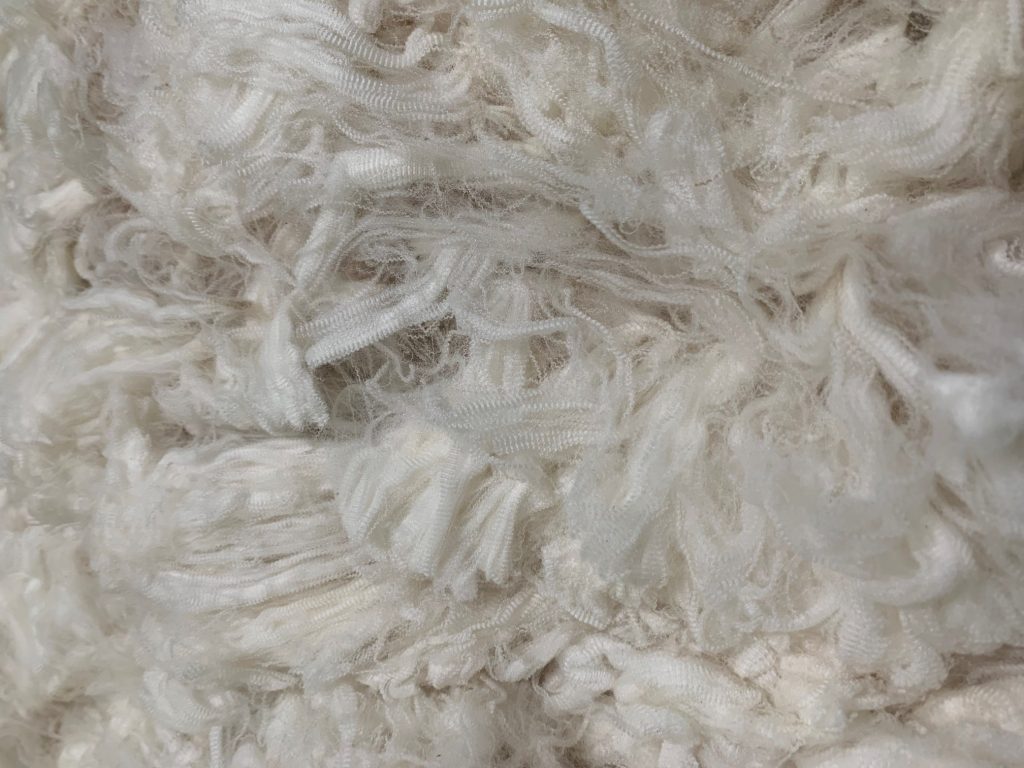
Fine Tasmanian wool was a bright spot on the market this week. Image – AWEX.
SPECIALITY fine wool from Tasmania and higher crossbred prices helped balance the general losses on the Australian auction market this week.
AWEX senior market analyst Lionel Plunkett said Melbourne opened proceedings on Tuesday with the first designated Tasmanian sale of the calendar year.
More than 60 percent of the offering was Tasmanian grown and stored wool, with a large selection of 16-19 micron Spinners/Best style wools with yields averaging well over 70pc dry.
“These specialty lots were in keen demand, pushing prices higher.
“These increases helped to push the Southern individual Micron Price Guides (MPGs) prices up by 2 to 11 cents for the day.”
Mr Plunkett said the crossbred sector was the only shining light of the series, strong demand helped to push the 26 to 30 micron MPGs up by 15 to 56 cents.
However, Mr Plunkett said the market was unable to sustain its upward trajectory, with losses felt across the entire facet of Merino types and microns.
The AWEX Eastern Market Indicator (EMI) fell by nine cents for the series, closing at 1568 cents/kg clean. With 40,176 bales were available to the trade, the national offering is still well down on the previous season, he said.
“Compared to the corresponding sale of last year, there has been 96,438 fewer bales offered through auction, a reduction of 9.3pc.”
Brokers passed in 22pc of the eventual offering, after 12pc was withdrawn prior to auction.
Mr Plunkett said as Sydney and Fremantle joined Melbourne on the second and third selling days this week, the main buyer focus was again centred on the good/best style wools with favourable additional measurement results.
“Due to the strong attention these lots received they recorded minimal change for the series.
“Lesser style wools and those with poor additional measurement results did not receive the same support, continually losing ground as the series progressed,” he said.
“Some lots with very high mid breaks (greater than 85) sold at levels 100 to 150 cents below similar spec lots containing mid breaks of less than 40.”
Container cost imposts yet to come – AWI
Australian Wool Innovation trade consultant Scott Carmody said the large expenditure of capital by the major buyers has been maintained throughout the past three weeks.
“That expense is plain to see and easily calculated.
“If shipments are delayed significantly, the cash reserves of these buyers and exporters will surely be tested in coming weeks,” he said in his weekly market report.
“Some of the wool selling brokers have offered a week extra grace period to pay for wool purchases, but that good intent represents far less than half of the offered quantities each week.
“This is most helpful and appreciated by exporters with delayed contracts, but obviously not the panacea to the larger potential issue.”
Mr Carmody said one of the major roadblocks on the horizon for wool export will be the immediate lack of containers and vessels arriving from China.
“The shipment of wool relies on the import of goods from China into Australia to get the wool back to Chinese factories.
“This is relevant not just for the physical transfer, but also for the discounted cost,” he said.
“Ships heading back to China are usually very competitive for freight rates and if we use the comparative analogy of a “backload discount” we enjoy at times in Australia in the trucking industry, these shipping costs have been exceptionally low for years.”
Mr Carmody said full container load (FCL) rates are expected to have severe upward pressure placed upon them as well as the applicable port charges until the current China situation remedies itself.
“That’s all of course subject to vessel availability as authorities work their way through the ability or not of the virus to live and transmit contagions on non-organic matter.”
Mr Carmody said information from the Journal of Hospital Infection indicates from initial studies that the virus is able to live for at least a week on surfaces.
“Whether vessels and the FCLs on board are allowed to enter Australia or have a withholding period remains unknown.”
Next week’s national offering increases slightly to 42,770 bales, with all three centres in operation. Melbourne will again sell over three days to accommodate the increased quantity.



HAVE YOUR SAY